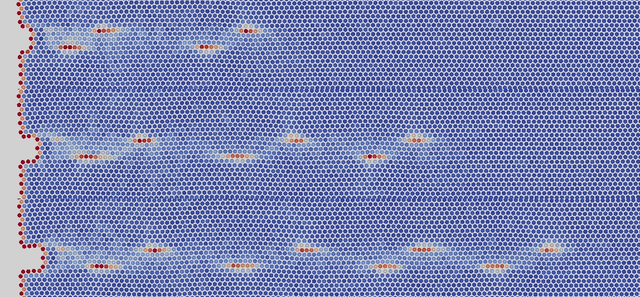Atomistic modeling
Diving into the world of atoms. This is possible through modern atomistic simulation methods, which enable the study of diverse material phenomena on computers.
In our research, we focus on improving these methods and especially study their use in multiscale material models.
Atomistic simulation methods enable us to track the exact motion of millions of atoms. With this knowledge, we can study material properties and material phenomena, that are hard to capture with other methods, with high accuracy.
This accuracy however has its price, as these simulation methods are among the most computationally demanding methods in solid state physics. Even with use of high performance computing, the atomic systems under study can only be followed for a split second. In order to study larger systems for longer periods, the so-called multiscale modeling comes into play.
In this approach, a physical body is separated into regions with different degrees of required accuracy. In high accuracy regions, atomistic simulation methods are applied, whereas in low accuracy regions, often methods from continuum mechanics are used, which save a
high amount of computational effort. The coupling of these different approaches in the transition areas is complicated and a topic of ongoing research.
In our research, we focus on improving this coupling to enable higher efficiency and accuracy.

